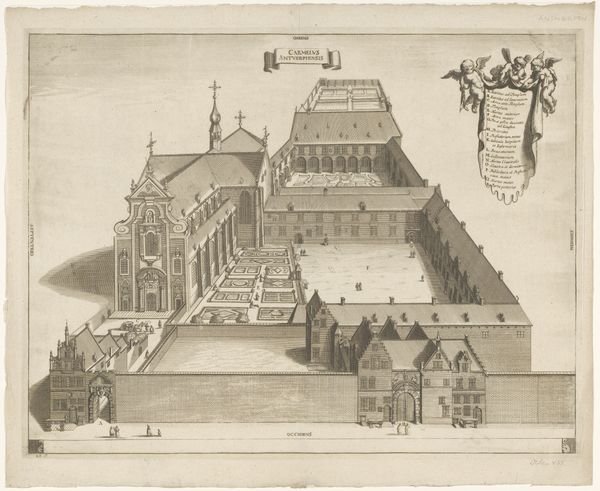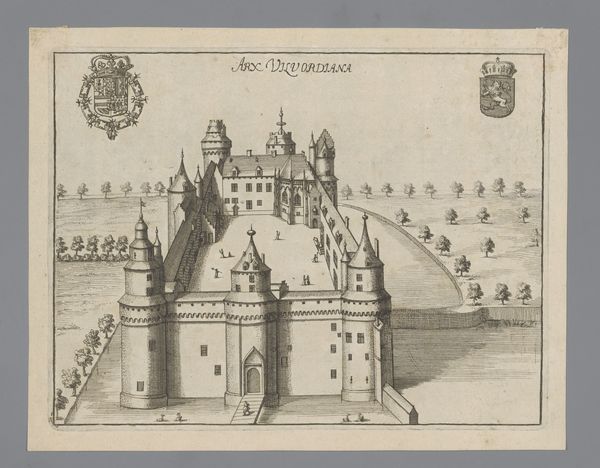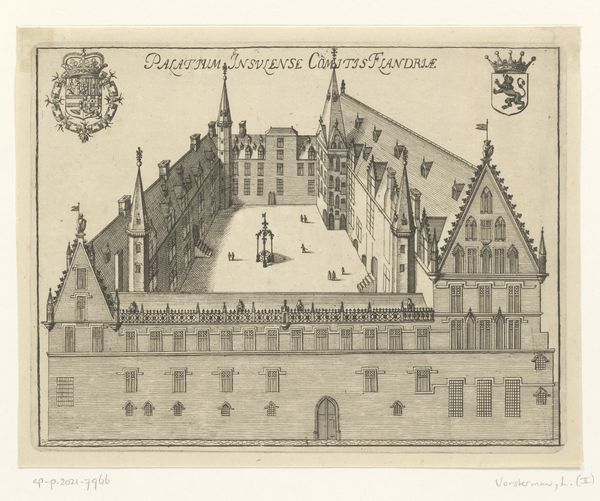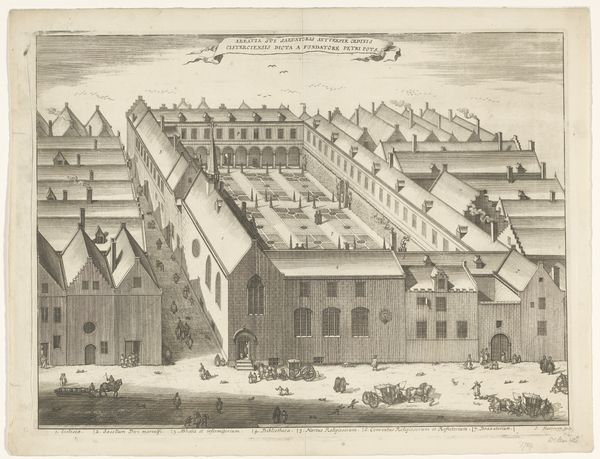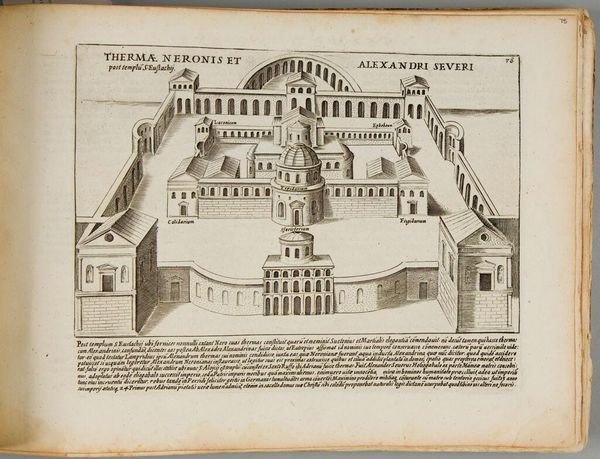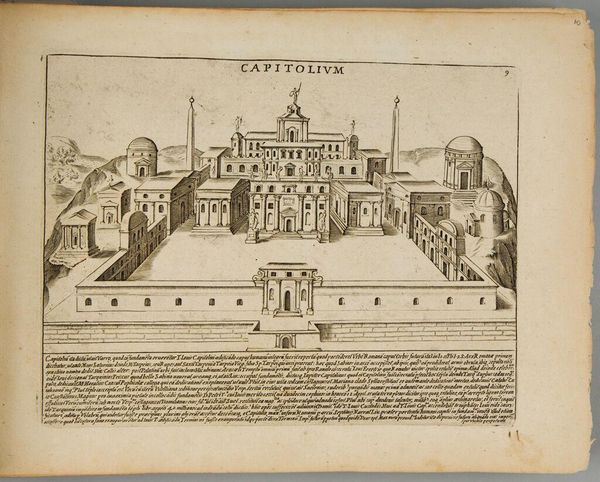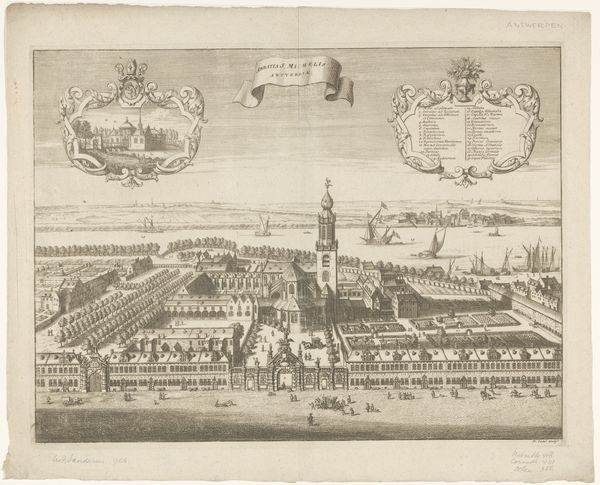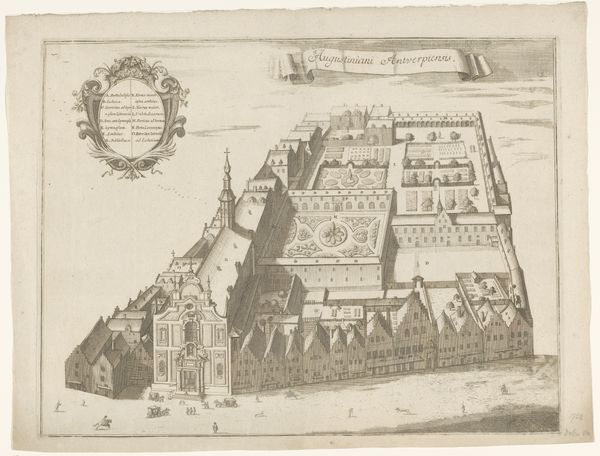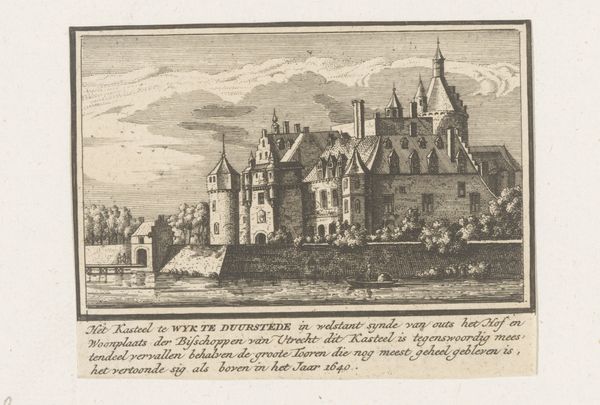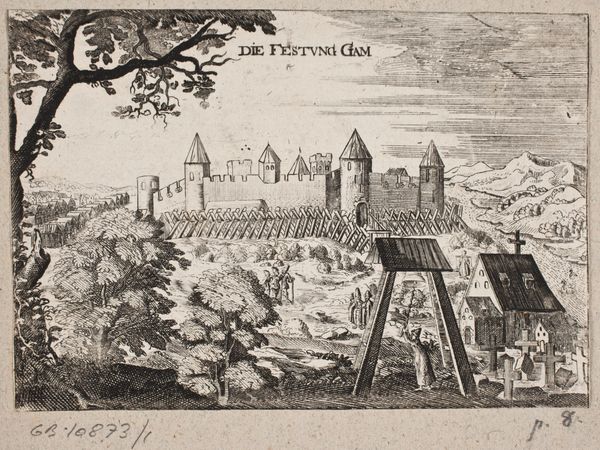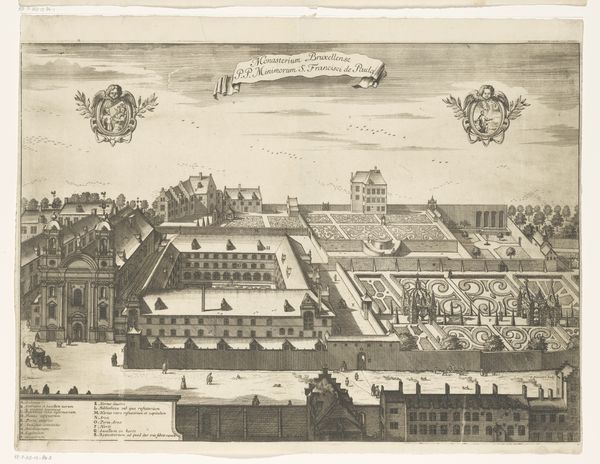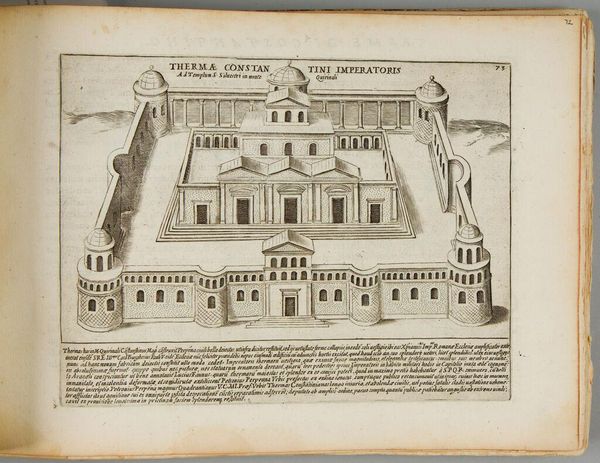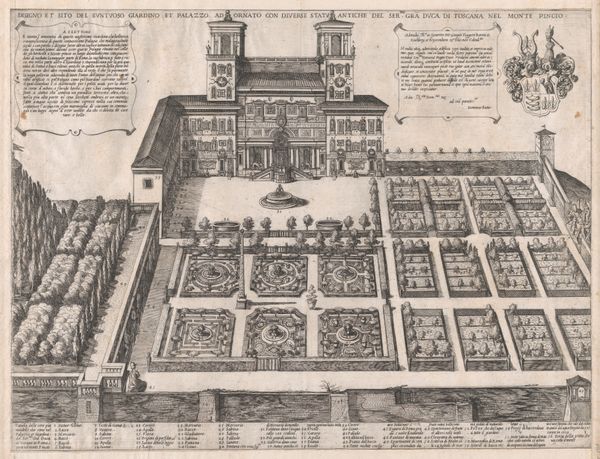
print, engraving, architecture
#
baroque
# print
#
old engraving style
#
traditional media
#
cityscape
#
engraving
#
architecture
Dimensions: height 261 mm, width 354 mm
Copyright: Rijks Museum: Open Domain
Editor: This engraving, "Gezicht op het Karmelietenklooster, te München" by Michael Wening, made in 1701, presents an aerial perspective of a Carmelite monastery. It looks so serene and orderly. What visual cues are most significant to you? Curator: The organization of space immediately stands out. The monastery is neatly divided, with the church, gardens, and living quarters clearly delineated. Consider the religious context. Gardens in monasteries weren't just decorative; they were often symbolic of paradise, a secluded space for contemplation, shielded from the temporal world. Do you think the artist uses this division as more than just a description of space? Editor: It could represent a specific order to the life of the monks within the monastery? Each section representing a part of the lifestyle. Curator: Exactly. Think of the building’s orientation and imposing facade as not just stone and mortar, but a statement of the Church's presence. The Carmelite order, known for its focus on contemplative prayer, also influences how they interact with and inhabit a physical space. What about the crest, at the upper-left corner? What does that tell you about authority, memory and tradition? Editor: I guess that identifies who commissioned or had power over the monastery? That symbols of authority reinforce not just physical presence but also ideological control. It's like a map but also an assertion of power! I didn't see that before. Curator: And notice how this depiction mirrors broader Baroque artistic conventions? Everything from the landscaping to the very detailed architecture emphasizes structure and control. Wening provides not just an image, but also a meditation on established religious and societal norms. Editor: This has given me a new perspective, seeing how much the engraving communicates beyond its architectural subject! Curator: It's fascinating to consider how an image carries the weight of its time, telling tales about authority, faith, and the careful control of both landscape and belief.
Comments
No comments
Be the first to comment and join the conversation on the ultimate creative platform.
